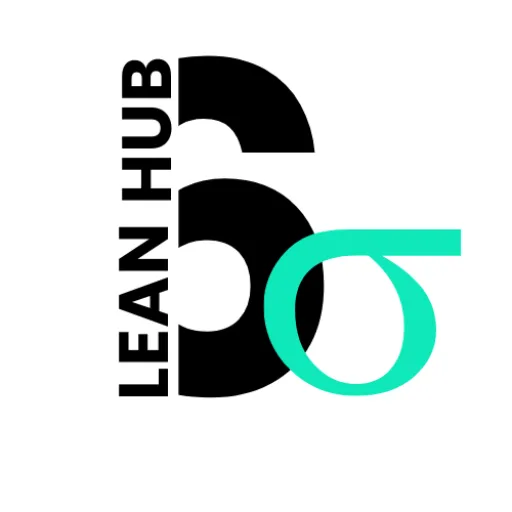Maximizing Efficiency: Part 2 Lean Tools and Techniques
In the ever-evolving landscape of modern business, the pursuit of efficiency and waste reduction has become paramount. Lean tools and techniques have emerged as essential methodologies that organizations adopt to streamline processes, enhance productivity, and ultimately deliver greater value to customers. By focusing on the elimination of waste—defined as anything that does not add value to the end product—these tools empower teams to identify inefficiencies and implement solutions that foster continuous improvement.
As we delve into the various lean tools, we will uncover how they can transform our operations and create a culture of excellence. The principles of lean thinking are rooted in the idea that every employee, from the shop floor to the executive suite, plays a crucial role in driving improvement. By engaging everyone in the organization, we can cultivate a mindset that prioritizes efficiency and quality.
Lean tools are not merely techniques; they represent a philosophy that encourages collaboration, innovation, and a relentless focus on customer satisfaction. As we explore each tool in detail, we will see how they interconnect and contribute to a holistic approach to operational excellence.
Key Takeaways
- Lean tools and techniques are used to eliminate waste and improve efficiency in processes.
- Value Stream Mapping is a visual tool used to analyze and improve the flow of materials and information in a process.
- The 5S Methodology focuses on organizing and standardizing the workplace to improve efficiency and safety.
- The Kanban System is a visual scheduling system used to control the flow of materials and production.
- Kaizen Events are short-term improvement projects focused on making incremental changes to processes.
- Poka-Yoke, or error proofing, is a method used to prevent mistakes and defects in processes.
- Just-In-Time (JIT) Production aims to produce and deliver products only when they are needed, reducing inventory and waste.
- Total Productive Maintenance (TPM) is a strategy for maintaining equipment to prevent breakdowns and defects.
Value Stream Mapping
Value Stream Mapping (VSM) is one of the foundational tools in lean methodology, serving as a visual representation of the flow of materials and information throughout a process. By mapping out each step involved in delivering a product or service, we can identify areas where waste occurs and opportunities for improvement arise. This technique allows us to visualize not only the current state of our processes but also to envision a future state that maximizes value while minimizing waste.
As we engage in value stream mapping, we begin by gathering input from various stakeholders involved in the process. This collaborative effort ensures that we capture a comprehensive view of the workflow, highlighting both value-adding and non-value-adding activities. Once we have mapped the current state, we can analyze it to pinpoint bottlenecks, redundancies, and delays.
The insights gained from this exercise enable us to develop targeted action plans that drive efficiency and enhance overall performance.
5S Methodology
The 5S methodology is a powerful tool for organizing and standardizing the workplace, promoting efficiency and safety. The five pillars of 5S—Sort, Set in order, Shine, Standardize, and Sustain—provide a structured approach to creating an organized environment where employees can thrive. By implementing 5S, we not only improve productivity but also foster a culture of discipline and respect for our workspaces.
In the initial phase of Sort, we systematically evaluate items in our workspace to determine what is necessary and what can be eliminated. This decluttering process lays the foundation for the subsequent steps. Once we have sorted through our materials, we move on to Set in order, where we arrange tools and resources in a manner that promotes efficiency and accessibility.
The Shine phase emphasizes cleanliness, ensuring that our work environment is not only tidy but also safe. Standardizing processes helps us maintain these improvements over time, while Sustain encourages ongoing commitment to the 5S principles. Together, these steps create a sustainable framework for continuous improvement.
Kanban System
| Metrics | Value |
|---|---|
| Lead Time | 10 days |
| Cycle Time | 5 days |
| Throughput | 15 units/week |
| Work in Progress (WIP) | 20 items |
| Blocked Items | 3 items |
The Kanban system is a visual management tool that enhances workflow efficiency by controlling inventory levels and optimizing production processes. Originating from Toyota’s production system, Kanban utilizes visual signals—such as cards or boards—to indicate when to produce or replenish items. This pull-based system allows us to respond dynamically to customer demand while minimizing excess inventory and reducing lead times.
As we implement Kanban, we begin by establishing clear visual signals that communicate the status of work items throughout our processes. This transparency fosters collaboration among team members and enables us to identify potential bottlenecks before they escalate into larger issues. By limiting work in progress (WIP), we can focus on completing tasks efficiently rather than spreading ourselves too thin across multiple projects.
The Kanban system not only enhances our operational agility but also empowers us to make data-driven decisions that align with customer needs.
Kaizen Events
Kaizen events are focused improvement initiatives that bring together cross-functional teams to address specific challenges within an organization. The term “Kaizen” translates to “continuous improvement,” reflecting our commitment to fostering a culture where incremental changes lead to significant enhancements over time. These events typically involve intensive workshops where team members collaborate to identify problems, brainstorm solutions, and implement changes within a short timeframe.
During a Kaizen event, we engage in activities such as brainstorming sessions, root cause analysis, and process mapping. By leveraging diverse perspectives from various departments, we can uncover insights that may have been overlooked in traditional problem-solving approaches. The collaborative nature of Kaizen events not only accelerates the improvement process but also strengthens team dynamics as we work together toward common goals.
Once changes are implemented, we establish metrics to measure their impact, ensuring that our efforts lead to tangible results.
Poka-Yoke (Error Proofing)
Poka-Yoke is a Japanese term meaning “mistake-proofing,” and it refers to techniques designed to prevent errors before they occur. In our quest for operational excellence, implementing Poka-Yoke mechanisms helps us minimize defects and enhance product quality. By anticipating potential mistakes and designing processes that eliminate opportunities for error, we can significantly reduce rework and improve customer satisfaction.
As we explore Poka-Yoke solutions, we find that they can take various forms—ranging from simple visual cues to more complex automated systems. For instance, color-coded components can guide assembly workers in selecting the correct parts, while sensors can detect misalignments during production. By integrating these error-proofing measures into our workflows, we create an environment where mistakes are less likely to happen, ultimately leading to higher quality outputs and reduced costs associated with defects.
Just-In-Time (JIT) Production
Just-In-Time (JIT) production is a lean manufacturing philosophy aimed at reducing inventory levels while ensuring that products are available when needed.
By synchronizing production schedules with customer demand, JIT allows us to minimize waste associated with excess inventory and storage costs.
This approach requires precise planning and coordination across all aspects of the supply chain.
Implementing JIT involves close collaboration with suppliers to ensure timely delivery of materials and components. As we adopt this methodology, we must also cultivate a culture of flexibility within our workforce, enabling us to respond quickly to fluctuations in demand. The benefits of JIT extend beyond cost savings; by streamlining our production processes, we enhance our ability to deliver high-quality products promptly, thereby improving customer satisfaction and loyalty.
Total Productive Maintenance (TPM)
Total Productive Maintenance (TPM) is an approach that emphasizes proactive maintenance practices aimed at maximizing equipment effectiveness and minimizing downtime. By involving all employees—from operators to management—in maintenance activities, TPM fosters a sense of ownership and accountability for equipment performance. This holistic approach not only enhances productivity but also contributes to a safer work environment.
As we implement TPM, we begin by establishing a culture of continuous improvement around equipment maintenance.
This includes regular training for operators on basic maintenance tasks and encouraging them to take an active role in identifying potential issues before they escalate into costly breakdowns. We also develop metrics to track equipment performance and establish maintenance schedules that align with production needs.
By prioritizing TPM, we create a sustainable framework for maintaining equipment reliability while empowering our workforce to contribute actively to operational excellence. In conclusion, lean tools and techniques offer us invaluable strategies for enhancing efficiency and driving continuous improvement within our organizations. From Value Stream Mapping to Total Productive Maintenance, each tool plays a vital role in creating a culture of excellence that prioritizes customer satisfaction and operational effectiveness.
As we embrace these methodologies collectively, we position ourselves for long-term success in an increasingly competitive landscape.
FAQs
What are Lean Tools and Techniques?
Lean tools and techniques are methods and strategies used to streamline processes, eliminate waste, and improve efficiency in a business or organization. These tools and techniques are derived from the principles of lean manufacturing and are designed to optimize operations and maximize value for the customer.
What are some examples of Lean Tools and Techniques?
Some examples of lean tools and techniques include value stream mapping, 5S (Sort, Set in order, Shine, Standardize, Sustain), Kanban, Kaizen (continuous improvement), Poka-Yoke (error-proofing), and Just-in-Time (JIT) production. These tools and techniques are used to identify and eliminate waste, improve flow, and enhance overall productivity.
How do Lean Tools and Techniques benefit businesses?
Lean tools and techniques help businesses improve efficiency, reduce costs, and enhance quality. By eliminating waste and optimizing processes, businesses can deliver products and services more effectively, increase customer satisfaction, and gain a competitive edge in the market.
Are Lean Tools and Techniques only applicable to manufacturing?
No, Lean tools and techniques are not limited to manufacturing. While they originated in the manufacturing industry, they have been successfully applied to various sectors including healthcare, service industries, and software development. The principles of lean can be adapted to improve processes and operations in any type of organization.






